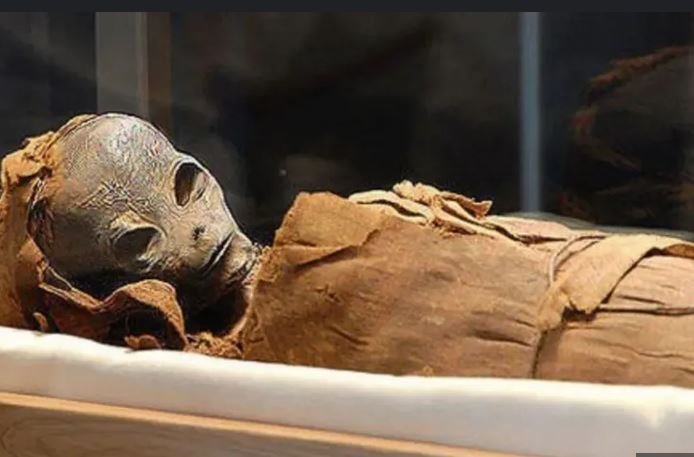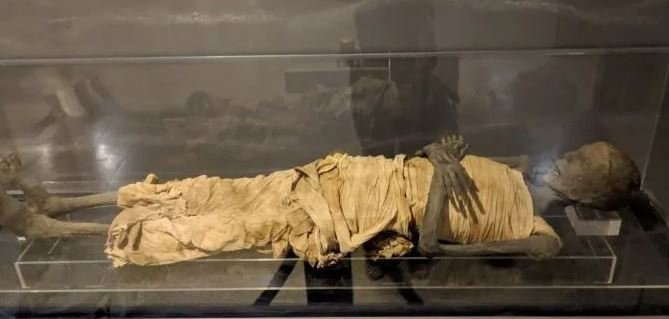California’s diverse landscape hides a lesser-known secret: the presence of ancient mummies that offer tantalizing glimpses into the lives of its earliest inhabitants. These mummies, preserved through natural processes or intentional burial practices, provide a window into the rich and often enigmatic history of the region’s indigenous peoples.

Ancient Mummification Practices
The mummification practices of California’s indigenous peoples varied across different cultures and regions. In places like the arid deserts of the Great Basin and the coastal areas, natural mummification occurred due to dry conditions or specific burial practices. Bodies were sometimes wrapped in textiles or placed in caves, preserving them for centuries and offering insights into ancient rituals and beliefs surrounding death and the afterlife.
The Chinchorro Mummies of the California Desert
In California’s deserts, particularly in areas like the Mojave Desert and Death Valley, ancient mummies known as the Chinchorro mummies have been discovered. These mummies predate the Egyptian mummies by thousands of years and are among the oldest intentionally prepared mummies found in the Americas. Their preservation provides valuable clues about the daily life, health, and culture of the early inhabitants of these harsh desert environments.
Spirit Cave Mummy
The Spirit Cave Mummy, found in Nevada but part of the broader cultural context of the Great Basin region, represents a significant archaeological find in understanding California’s ancient peoples. This mummy, dating back over 10,000 years, has sparked debates and legal battles over its repatriation to indigenous tribes for reburial, highlighting the complexities of archaeological ethics, cultural heritage, and the preservation of ancient remains.
Cultural Significance and Modern Perspectives
The study of California’s mummies not only sheds light on ancient burial practices and lifeways but also raises important questions about cultural preservation and respect for indigenous beliefs. Modern scientific techniques, such as DNA analysis and radiocarbon dating, are providing new insights into the genetic ancestry and migration patterns of California’s early inhabitants, contributing to a more comprehensive understanding of the region’s prehistory.
The Llullaillaco Mummies
In the remote Andes Mountains of South America, but culturally connected to California’s ancient peoples, the Llullaillaco mummies offer insights into ritualistic practices of preservation. These well-preserved mummies were found atop Mount Llullaillaco, reaching heights of over 22,000 feet. Their discovery revealed the intricate rituals surrounding sacrificial offerings and the reverence for high-altitude landscapes among ancient cultures, providing a comparative perspective on burial practices across different regions.
Cave of the Hands: Rock Art and Burial Sites
In the rugged canyons of California’s interior, sites like the Cave of the Hands reveal a blend of rock art and burial grounds dating back thousands of years. These caves, adorned with handprints and paintings depicting ancient life, also contain burial sites where mummified remains have been discovered. The intricate connection between art, spirituality, and burial customs offers a glimpse into the cultural significance of these remote landscapes to California’s early inhabitants.
Repatriation and Respect
The study and display of mummies raise ethical considerations regarding cultural sensitivity and respect for indigenous beliefs. Many indigenous communities advocate for the repatriation of ancestral remains to their rightful descendants, emphasizing the importance of honoring traditions and spiritual practices. Archaeologists and museums increasingly collaborate with indigenous groups to ensure that research and preservation efforts align with ethical guidelines that prioritize cultural preservation and respect.
Conclusion
In conclusion, California’s mummies offer a captivating glimpse into the diverse and complex cultures that flourished across the region millennia ago. From the desert mummies of the Mojave to the ritualistic practices of high-altitude burials, each discovery enriches our understanding of California’s ancient past. By embracing ethical practices in archaeology and leveraging cutting-edge technology, we can continue to unravel the mysteries surrounding these ancient remains while honoring the cultural heritage of California’s indigenous peoples.

